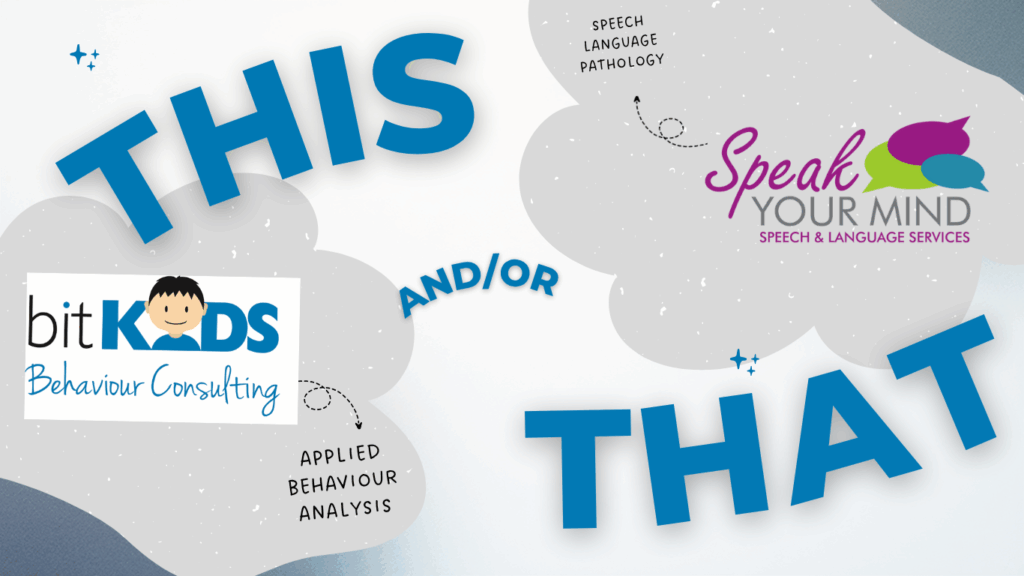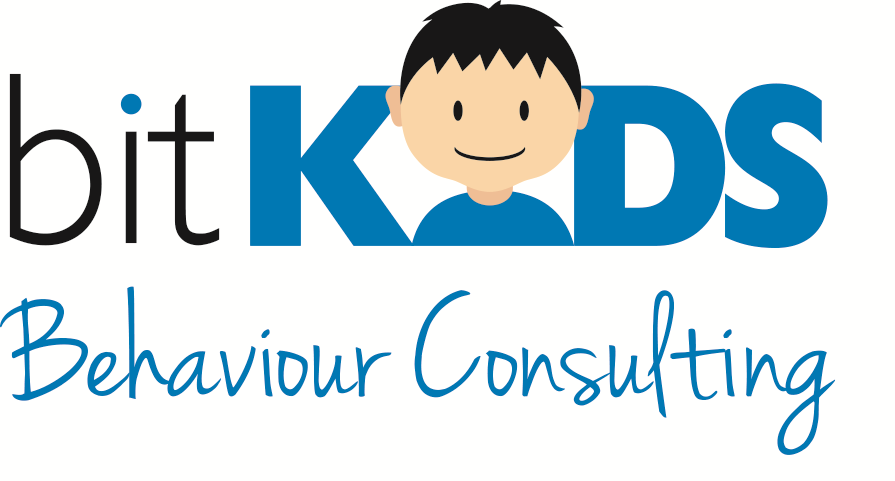When ABA and SLP Work Hand-in-Hand

A Follow-Up Conversation with Corinna Bittle, Clinical Director at bitKIDS Behaviour Consulting
In our last post, Speech-Language Pathologist Briar Cipryk of Speak Your Mind, shared how speech therapy supports communication, social interaction, and connection for children on the autism spectrum.
At bitKIDS Behaviour Consulting, we know that children make the most meaningful progress when their team works together. That’s why collaboration between Applied Behaviour Analysis (ABA) and Speech-Language Pathology (SLP) is always supported.
For families using Ontario Autism Program (OAP) funding, understanding how these services connect can make choosing the right supports much easier. When ABA and speech therapy work hand-in-hand, children benefit from consistent goals, shared strategies, and a team that communicates every step of the way.
To give parents a closer look at what that collaboration really looks like in practice, we sat down with Corinna Bittle, Clinical Director at bitKIDS Behaviour Consulting, to talk about how behaviour analysts and SLPs coordinate within ABA sessions — and how that teamwork helps children develop communication, confidence, and independence.
Questions for Corinna Bittle, Clinical Director / Behaviour Analyst
Supporting Communication Through ABA
Q. From your perspective, how does ABA therapy support communication development — especially for children who are non-speaking or use AAC?
So many of the learners we see come to us because they are looking for support across many areas of learning. They want a program that incorporates self-care, communication, leisure, social, and pre-academic skills. Sometimes they also want a program that will support a reduction in challenging behaviour. Communication is the key to just about everything. If we can support a learner in communicating their wants and needs, often we find that challenging behaviour disappears. Communication becomes a tool for social connection and learning. An ABA team can support teaching a learner to communicate many of their wants and needs, and can support more complex language as well. Preferably we will do this in collaboration with a SLP so that we are making sure we are teaching all of the important pieces.
I’d like to preface this by saying I always want a SLP on board when we are teaching use of AAC. We lean on SLPs to determine what AAC program to choose for an individual, how to set it up (grid size, etc), and where to start our teaching. Once things are set up, our team will move forward with teaching in our environment. We can model language on the device, show the learner where to find words and phrases, make sure important vocab is on the device, and all around support the learner in using their device so that it becomes their voice.
Q. How do you integrate strategies or recommendations from an SLP into your ABA programming?
Oh, I think this is where the fun happens! Collaboration looks a bit different for every learner, based on their needs and goals. Many of the learners we see are already seeing a SLP. In these cases, we may have regular meetings to connect about goals, talking about what we are working on and why, and asking for insight. We might have questions about next steps in language, what phrase to teach to make a social interaction more meaningful, how to take the next steps with AAC, what language to model, how to bring language into play, and so many more. We can check in with the SLP as frequently as needed for next steps. We have the privilege of working with children for 6-20 hours a week. This is a lot of teaching time and we want to make the most of it. Making sure that we are taking cues from a SLP helps us to ensure that we are providing the best services to our clients. We have used a variety of models to support the children we see. Sometimes, a SLP has provided an assessment and suggested goals to our team, with check-ins booked every few months to provide further recommendations. In some cases we have requested SLP support and have determined that what the child needs is ongoing SLP either instead of or combined with ABA.
Q. Can you share an example of a child who made great progress because of strong collaboration between the ABA and SLP teams?
I can think of dozens of children who have excelled in part because of the collaboration between teams working with the child and family. In the last few years in particular, I have been so impressed with the support and direction we have received to really dig into more complex communication using AAC and using the AAC device as a tool to communicate text messages to family members. How wonderful for our young adolescent clients to send texts to their people to say hello, share a thought, or ask a question.
The Family Experience
Q. What advice would you give to parents who are trying to decide between starting with ABA, SLP, or both?
It’s important to reflect on where your child is with their learning and what your goals are. Sometimes it can feel overwhelming to narrow down your goals, so a helpful place to start can be thinking about what are the top goals that would make your child’s day (and your day) a bit smoother? This can be a good place to start. If your top goals sound like they are in the wheelhouse of both a SLP and ABA team, I’d suggest reaching out to either professional to ask questions. SLP and ABA teams can provide guidance on where to start based on your specific situation and goals.
When ABA therapy and speech therapy come together, children experience a truly integrated autism service model — one that supports communication, learning, and daily life skills all at once.
At bitKIDS Behaviour Consulting, our ABA team works closely with Speech-Language Pathologists (SLPs) and Occupational Therapists (OTs) across Kitchener-Waterloo Region to provide family-centred, collaborative care. Whether your child is beginning to use new words, learning to communicate through AAC, or developing more advanced social communication skills, our team connects across disciplines to make sure therapy feels consistent and rewarding.
If you’re exploring OAP-funded autism services in Ontario and wondering whether your child might benefit from ABA, SLP, or both, we can help you decide what approach best fits your child’s unique needs.
Contact bitKIDS Behaviour Consulting to learn more about how our collaborative ABA and SLP programs can help your child communicate, connect, and thrive — at home, at school, and in the community.



